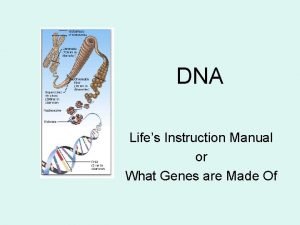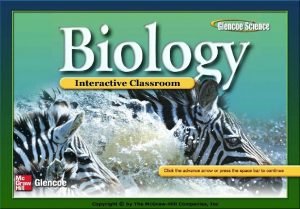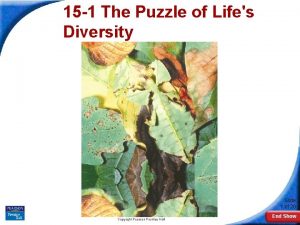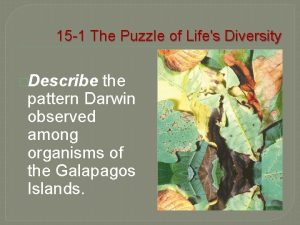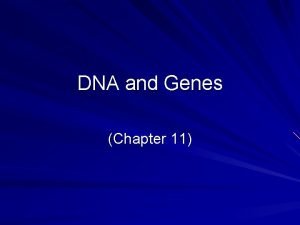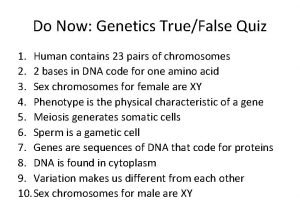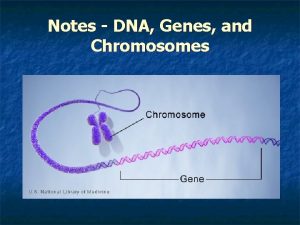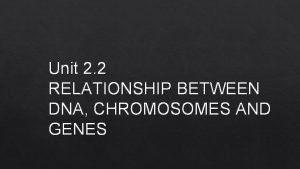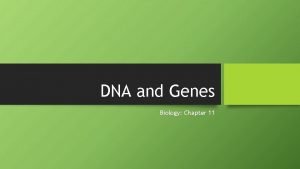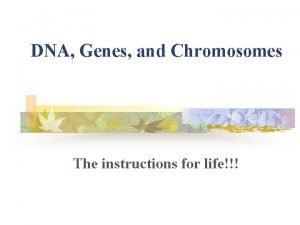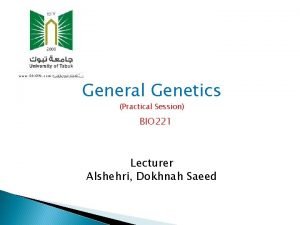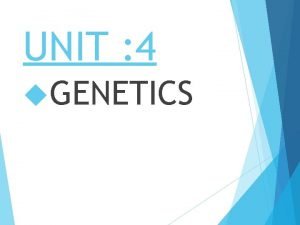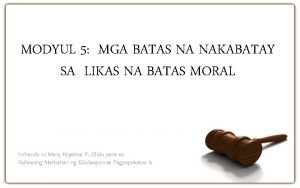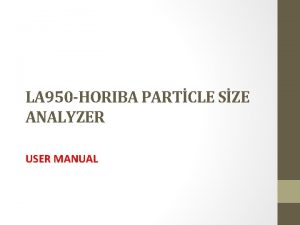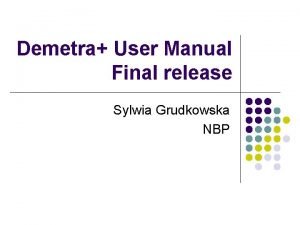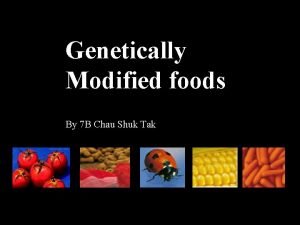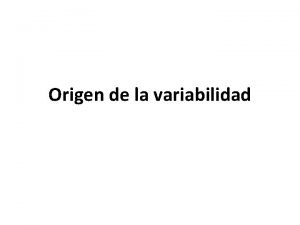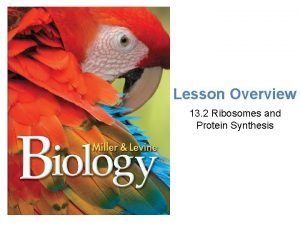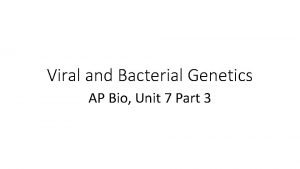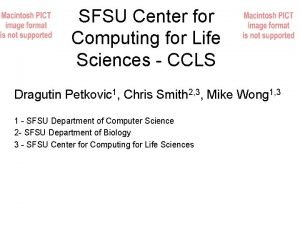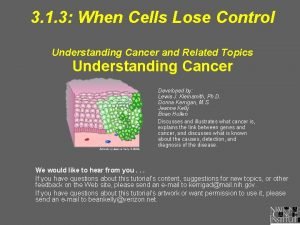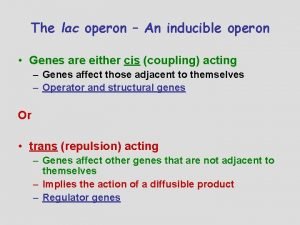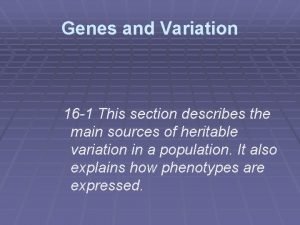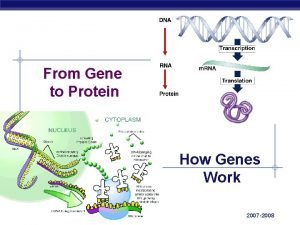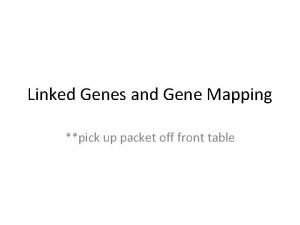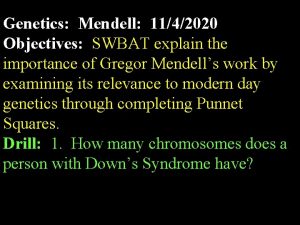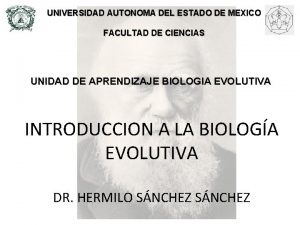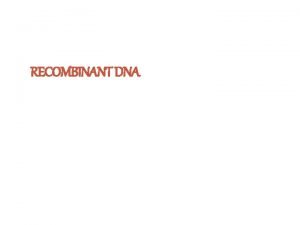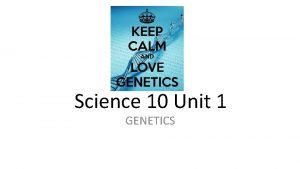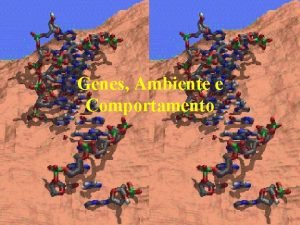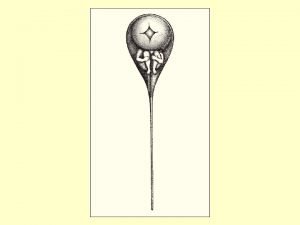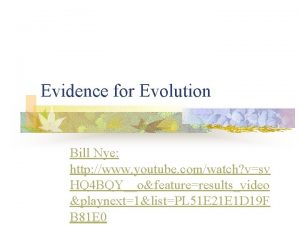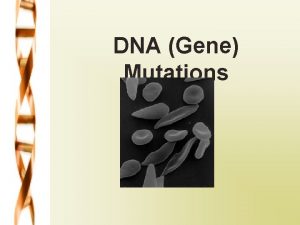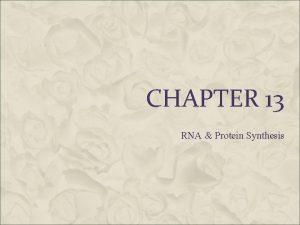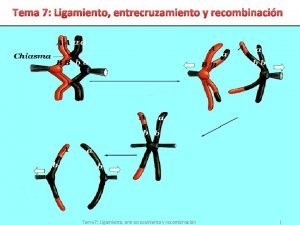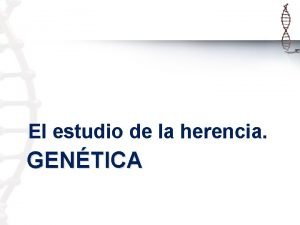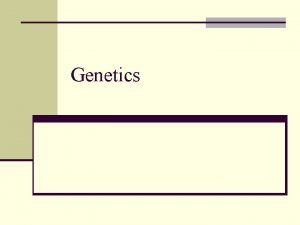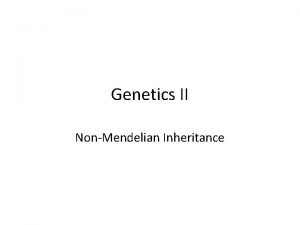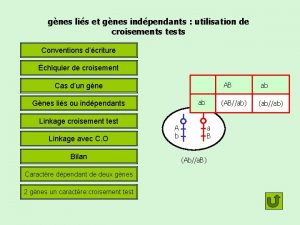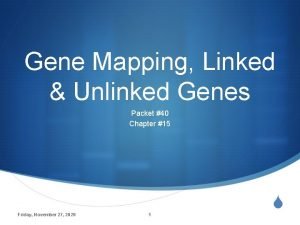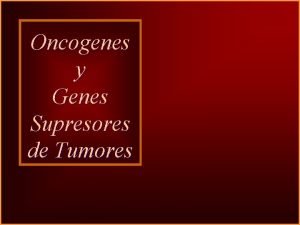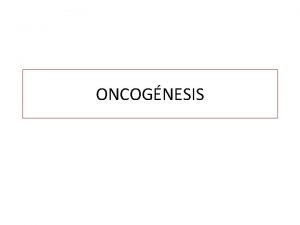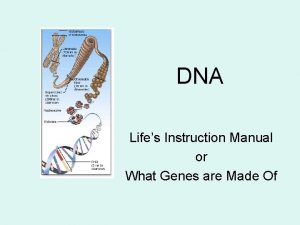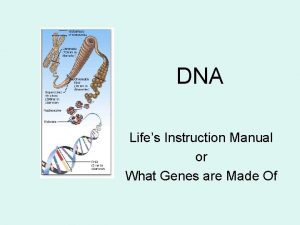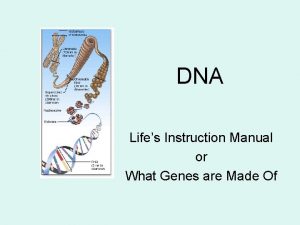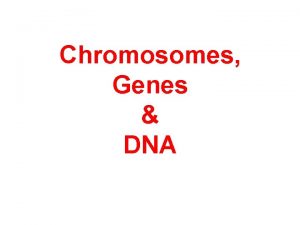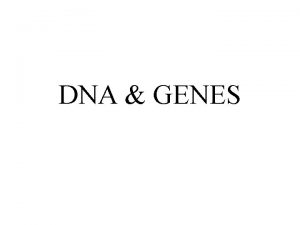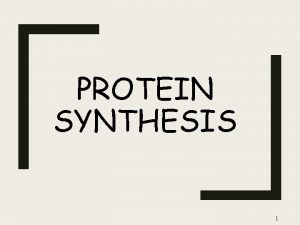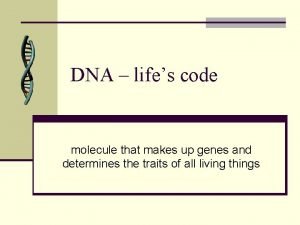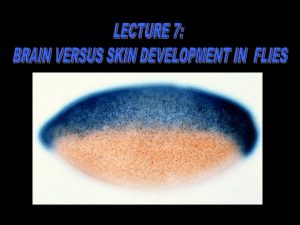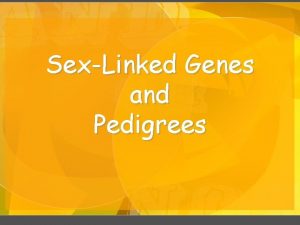DNA Lifes Instruction Manual of What Genes are































































- Slides: 63

DNA Life’s Instruction Manual of What Genes are Made Of

DNA (Deoxyribonucleic Acid) DNA Video

The Genetic Book of Life • Genome: Book • Chromosome: Chapter • DNA Strands: Sentences • Genes: words • Base pairs: letters

Important Scientists in Cellular Biology Unit 6 -DNA Structure and Replication

• Introduction to DNA

Matthias Schleiden 1804– 1881 • Contributed to cell theory (All living things are composed of cells. ); worked with Theodor Schwann; studied plant tissues and determined that plants are made of cells; also realized the importance of the cell’s nucleus and felt it might relate to cell division

Theodor Schwann 1810– 1882 • Contributed to cell theory (All living things are composed of cells. ); worked with Matthias Schleiden; discovered “Schwann cells” in the nervous system; studied animal cells/tissues especially muscular and nervous tissues; considered the founder of histology

Rudolf (Rudolph) Virchow 1821– 1902 • Contributed to cell theory (All cells arise from existing cells. ); considered father of pathology; was an advocate for public health; applied cell theory to the spread of diseases in the human body

Frederick Griffith & Oswald Avery 1879– 1941 • Griffith did experiments trying to find a vaccine for pneumonia; he discovered that when harmless bacteria and a virulent (actively poisonous) bacteria were mixed some of the harmless bacteria became virulent, he called this transformation; Avery continued Griffith’s experiments and tried to find out what substance caused the transformation, he determined it was DNA that caused the transformation 1877– 1955

Rosalind Franklin - X-ray photo of DNA. (1952)

Alfred Hershey & Martha Chase 1908– 1977 • Conducted experiments (the “Hershey-Chase” experiments) to confirm the transformation principle; determined that DNA is the genetic molecule of inheritance not proteins. 1927– 2003

Erwin Chargaff 1905– 2002 • Adenine and Thymine always join together • A T • Cytosine and Guanine always join together • C G

James Watson & Francis Crick 1928 - living • Discovered the double-helix structure of DNA (with the help of previous X-ray diffraction experiments by Rosalind Franklin and Maurice Wilkins). • animation 1916– 2004

Watson & Crick proposed… • DNA was made of 2 long stands of nucleotides arranged in a specific way called the “Complementary Rule” • DNA had specific pairing between the nitrogen bases: ADENINE – THYMINE CYTOSINE - GUANINE

The Shape of the Molecule • DNA is a very long polymer. • The basic shape is like a twisted ladder or zipper. • This is called a double helix. 15

The Double Helix Molecule • The DNA double helix has two strands twisted together. 16

DNA • DNA is often called the blueprint of life. • In simple terms, DNA contains the instructions for making proteins within the cell. 17

What can DNA do? • 1. Can replicate before cell division. • 2. Can direct protein synthesis. It tells the RIBOSOME to make a protein.

Why do we study DNA? DNA We study DNA for many reasons, e. g. , • its central importance to all life on Earth, • medical benefits such as cures for diseases, • better food crops. 19

Genetic material of cells… • GENES – units of genetic material that CODES FOR A SPECIFIC TRAIT • Called NUCLEIC ACIDS • DNA is made up of repeating molecules called NUCLEOTIDES


DNA Nucleotide Phosphate Group O O=P-O O 5 CH 2 O N C 1 C 4 Sugar (deoxyribose) C 3 C 2 Nitrogenous base (A, G, C, or T)

One Strand of DNA • The backbone of the molecule is alternating phosphates and deoxyribose sugar • The teeth are nitrogenous bases. phosphate deoxyribose bases 23

Nucleotides One deoxyribose together with its phosphate and base make a nucleotide. Nitrogenous base Phosphate Deoxyribose 24

One Strand of DNA nucleotide • One strand of DNA is a polymer of nucleotides. • One strand of DNA has many millions of nucleotides. 25

Four nitrogenous bases DNA has four different bases: C • Thymine T • Adenine A • Guanine G • Cytosine 26

Two Kinds of Bases in DNA N NC • Pyrimidines are single ring bases. O C C NC • Purines are double ring bases. N NC C CN NC NC 27

Thymine and Cytosine are pyrimidines • Thymine and cytosine each have one ring of carbon and nitrogen atoms. O N C OC CC N C thymine N N C O C C N C cytosine 28

Adenine and Guanine are purines • Adenine and guanine each have two rings of carbon and nitrogen atoms. N O N C N C C N N N C C Guanine N Adenine. N C 29

Two Stranded DNA • Remember, DNA has two strands that fit together something like a zipper. • The teeth are the nitrogenous bases but why do they stick together? 30

Hydrogen Bonds N C N N C C N C O • The bases attract each other because of hydrogen bonds. • Hydrogen bonds are weak but there are millions and millions of them in a single molecule of DNA. • The bonds between cytosine and guanine are shown here with dotted lines N C C O 31

Hydrogen Bonds, cont. • When making N hydrogen bonds, OC cytosine always N pairs up with N guanine N C • Adenine always C N pairs up with C C C thymine N N • Adenine is bonded to thymine here O C CC C 32

DNA by the Numbers • Each cell has about 2 m of DNA. • The average human has 75 trillion cells. • The average human has enough DNA to go from the earth to the sun more than 400 times. • DNA has a diameter of only 0. 00002 m. The earth is 150 billion m or 93 million miles from the sun. 33

DNA Double Helix “Rungs of ladder” Nitrogenous Base (A, T, G or C) “Legs of ladder” Phosphate & Sugar Backbone

DNA Double Helix 5 O 3 3 P 5 O O C G 1 P 5 3 2 4 4 2 3 P 1 T 5 A P 3 O O P 5 O 3 5 P

Nitrogenous Bases • PURINES 1. Adenine (A) 2. Guanine (G) A or G • PYRIMIDINES 3. Thymine (T) 4. Cytosine (C) T or C

Chargaff’s Rule • Adenine must pair with Thymine • Guanine must pair with Cytosine • Their amounts in a given DNA molecule will be about the same T A G C


BASE-PAIRINGS H-bonds G C T A


Genetic Diversity… • Different arrangements of NUCLEOTIDES in a nucleic acid (DNA) provides the key to DIVERSITY among living organisms.


The Code of Life… • The “code” of the chromosome is the SPECIFIC ORDER that bases occur. A T C G T A T G C G G…

DNA is wrapped tightly around histones and coiled tightly to form chromosomes



• DNA Replication video • DNA Replication Animation • DNA Animation

DNA Replication • DNA must be copied • The DNA molecule produces 2 IDENTICAL new complementary strands following the rules of base pairing: A-T, G-C • Each strand of the original DNA serves as a template for the new strand

DNA Replication Watson and Crick showed: the two strands of the parental molecule separate, and each functions as a template for synthesis of a new complementary strand. 1. . DNA Template Parental DNA New DNA



Replication Quiz 1. Why is replication necessary? A---? G---? 2. Describe how replication works. C---? T---? 3. Use the complementary rule to A---? create the complementary G---? strand: A---? G---? C---? A---? G---? T---?

Replication Quiz A---T 1. Why is replication necessary? G---C So both new cells will have the correct C---G DNA T---A 2. Describe how replication works. A---T Enzymes unzip DNA and complementary G---C nucleotides join each original strand. A---T 3. Use the complementary rule to G---C create the complementary strand: C---G A---T G---C T---A

Animation Time… • DNA replication animation take 2 • DNA Replication Process

(1961) Watson & Crick proposed… • …DNA controlled cell function by serving as a template for PROTEIN structure. • 3 Nucleotides = a triplet or CODON (which code for a specific AMINO ACID) See p. 303 • AMINO ACIDS are the building blocks of proteins.


DNA Transcription • DNA can “unzip” itself and RNA nucleotides match up to the DNA strand. See p. 301 • Both DNA & RNA are formed from NUCLEOTIDES and are called NUCLEIC acids.

DNA Translation • The cell uses information from “messenger” RNA to produce proteins See p. 304 -305 We will discuss details of this on a later date

1. 2. 3. 4. 5. 6. Transcription/Translation Quiz Why is transcription necessary? Describe transcription. Why is translation necessary? Describe translation. What are the main differences between DNA and RNA. Using the chart in your journal, identify the amino acids coded for by these codons: UGGCAGUGC

1. Why is transcription necessary? Transcription makes messenger RNA (MRNA) to carry the code for proteins out of the nucleus to the ribosomes in the cytoplasm. 2. Describe transcription. RNA polymerase binds to DNA, separates the strands, then uses one strand as a template to assemble MRNA. 3. Why is translation necessary? Translation assures that the right amino acids are joined together by peptides to form the correct protein.

4. Describe translation. The cell uses information from MRNA to produce proteins. 5. What are the main differences between DNA and RNA. DNA has deoxyribose, RNA has ribose; DNA has 2 strands, RNA has one strand; DNA has thymine, RNA has uracil. 6. Using the chart on page 303, identify the amino acids coded for by these codons: UGGCAGUGC tryptophan-glutamine-cysteine

AMAZING DNA FACTS… • DNA from a single human cell extends in a single thread for almost 2 meters long!!! • It contains information equal to some 600, 000 printed pages of 500 words each!!! (a library of about 1, 000 books)

LET’S REVIEW DNA… 1. Summarize the relationship between genes & DNA. 2. Describe the overall structure of the DNA molecule. 3. What are the 4 kinds of bases?
 Antigentest åre
Antigentest åre Life instruction manual
Life instruction manual Linked genes and unlinked genes
Linked genes and unlinked genes Linked genes and unlinked genes
Linked genes and unlinked genes Glomerulus
Glomerulus Organizing life's diversity
Organizing life's diversity Circle lifes
Circle lifes The puzzle of life's diversity
The puzzle of life's diversity 4 lifers
4 lifers Section 15-1 the puzzle of lifes diversity
Section 15-1 the puzzle of lifes diversity Are you ever burdened with a load of care
Are you ever burdened with a load of care Dna and genes chapter 11
Dna and genes chapter 11 Dna chromosomes genes diagram
Dna chromosomes genes diagram Genes chromosomes and dna
Genes chromosomes and dna What is the relationship between dna chromosomes and genes
What is the relationship between dna chromosomes and genes Dna and genes chapter 11
Dna and genes chapter 11 Chapter 11 dna and genes
Chapter 11 dna and genes What is agene
What is agene Dna, genes and chromosomes relationship
Dna, genes and chromosomes relationship Dna genes
Dna genes Genes chromosomes dna
Genes chromosomes dna Differentiated instruction vs individualized instruction
Differentiated instruction vs individualized instruction Site:slidetodoc.com
Site:slidetodoc.com What role does dna polymerase play in copying dna?
What role does dna polymerase play in copying dna? Function of dna polymerase 3
Function of dna polymerase 3 Bioflix activity dna replication lagging strand synthesis
Bioflix activity dna replication lagging strand synthesis Coding dna and non coding dna
Coding dna and non coding dna Likas na batas moral halimbawa
Likas na batas moral halimbawa Horiba la-960 instruction manual
Horiba la-960 instruction manual Regressor instruction manual
Regressor instruction manual Gmo tomatoes with fish genes
Gmo tomatoes with fish genes Penetrance and expressivity
Penetrance and expressivity Origen de la variabilidad
Origen de la variabilidad What role does the ribosome play in assembling proteins?
What role does the ribosome play in assembling proteins? Floral homeotic genes
Floral homeotic genes Jumping genes
Jumping genes Non protein coding genes
Non protein coding genes Genes on chromosome 11
Genes on chromosome 11 Section 16-1 genes and variation
Section 16-1 genes and variation Cancer prefix
Cancer prefix Lac operon genotype problems
Lac operon genotype problems This section describes
This section describes How genes work
How genes work How to find distance between genes
How to find distance between genes Linked genes
Linked genes Punnett square
Punnett square Plate out
Plate out Seleccion natural
Seleccion natural Tools of recombinant dna technology
Tools of recombinant dna technology Genes to traits
Genes to traits Genes ambiente
Genes ambiente Genes for blood type
Genes for blood type Genes de efecto materno
Genes de efecto materno Bill nye genes youtube
Bill nye genes youtube Causes of mutation
Causes of mutation A lac repressor turns off the lac genes by
A lac repressor turns off the lac genes by Entrecruzamiento
Entrecruzamiento Herencia poligénica
Herencia poligénica Bill nye genes worksheet answer key
Bill nye genes worksheet answer key Holandric genes
Holandric genes échiquier de croisement gènes liés
échiquier de croisement gènes liés Linked vs unlinked genes
Linked vs unlinked genes Genes supresores de tumores
Genes supresores de tumores Genes supresores de tumores
Genes supresores de tumores

